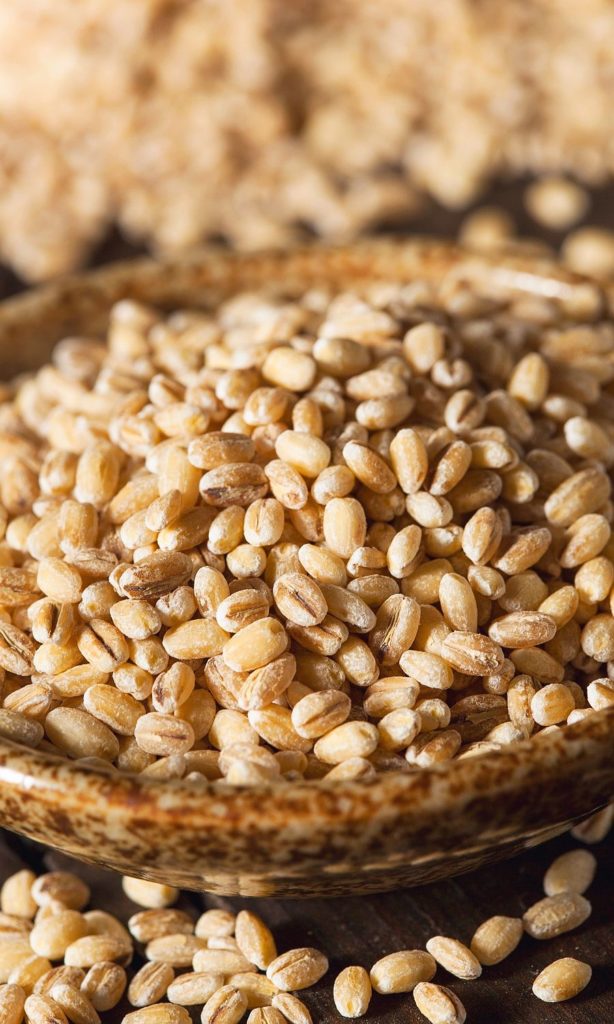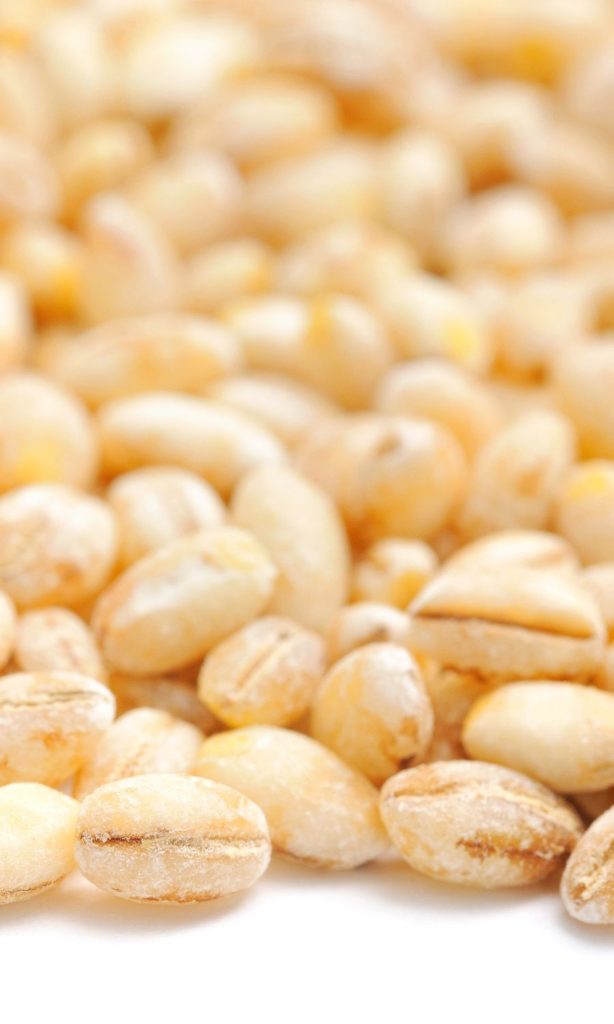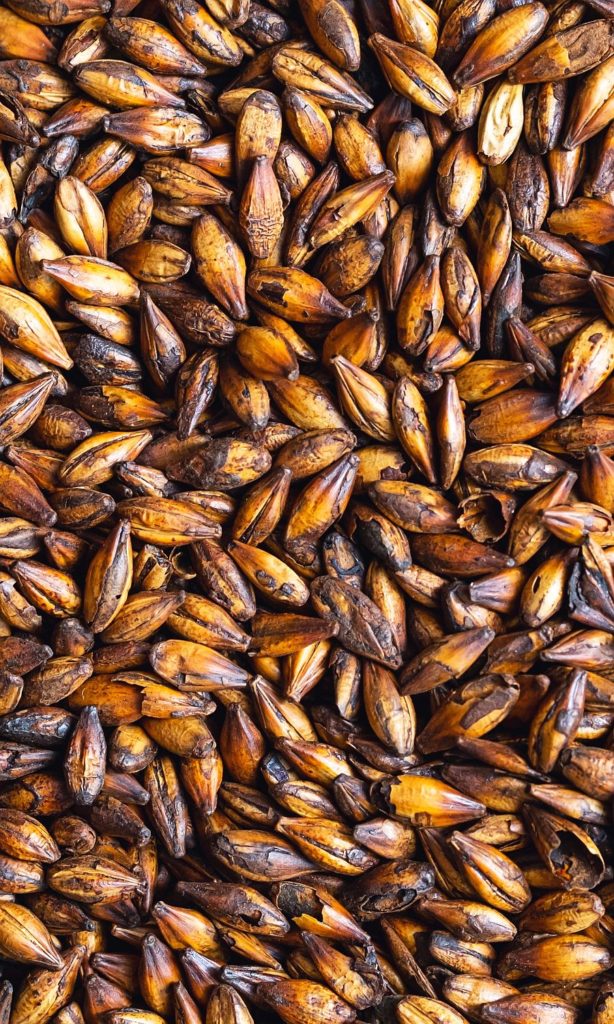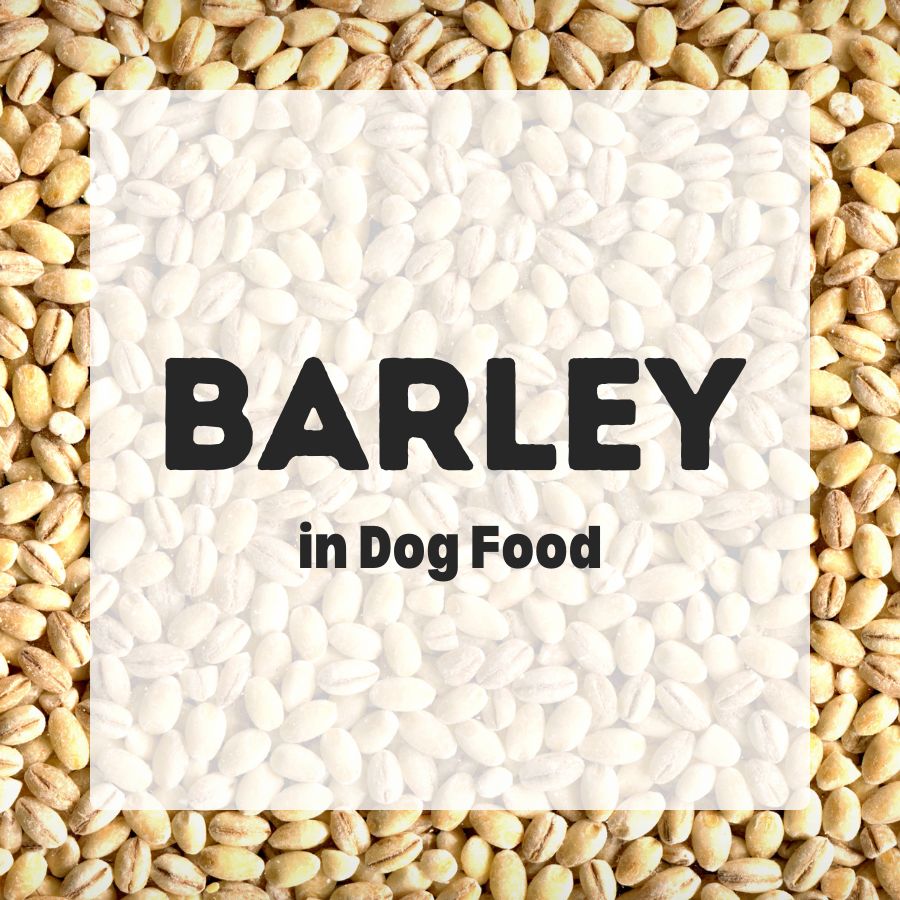Learn all about barley in dog food, a nutritious grain and a source of carbohydrates, fiber, protein, and essential nutrients.
Contents
About Barley
Barley (Hordeum vulgare) is a member of the grass family and a type of cereal grain. Barley grain has been cultivated for thousands of years for its nutritional benefits.
Today, much of all barley is used as animal feed and it’s also an important ingredient for beer and whisky production.

Barley refers to the whole dehulled kernel, which provides carbohydrates, protein, oils, bran, vitamins and minerals.
Regarding its nutritional profile, barley is mainly used in dry foods for its high carbohydrate content.
Cooked barley starch is an excellent source of metabolizable energy for dogs and is highly digestible[1]. Starch is broken down into glucose, making barley a great source of energy.
Barley provides both soluble and insoluble types of dietary fiber such as beta-glucans which may help to lower cholesterol[9].
Additionally, barley is low in fat and contains gluten. Overall, barley ingredients contain about 10.9-14.5% of plant-based protein[7].
Furthermore, whole barley contains a range of vitamins and minerals, including B vitamins, selenium, copper, and magnesium.
Removing most of the bran layer results in pearl barley which has a slightly lower nutritional content and mainly provides barley starch.
Why is Barley in Dog Food?
Compared to other cereal grains like corn and wheat, barley stands out for its unique nutritional composition.
Although barley contains a high proportion of starch, it is just a little lower than that of corn or wheat.
But it’s still a major source of carbohydrates, a source of energy.

However, what sets barley apart is its slightly higher protein content and its relatively high levels of fiber.
However, compared to other grain sources, large amounts of barley in dog food (>40%) may cause looser “output”, maybe due to its high fiber levels[1,8].
In moderation, barley is a nutritious ingredient and can be fed to dogs that tolerate grains in their diet.
We still don’t like it when grains are used in overly large quantities. After all, barley is a livestock feed grain and is rather cheap compared to animal-sourced ingredients.
And like with all grains, the quality and sourcing of the barley used in dog food can vary. For example, some barley cultivars are higher in protein than others[4].
Barley Ingredients
Barley is harvested with the hull attached. To make barley kernels edible the hard outer hull is carefully removed.
Dehulled barley or flour ground from dehulled barley is considered a whole grain since it still has its bran and germ.
Pearl barley has undergone processing to remove some or all of the outer bran layer along with the hull. If pearled barley was broken into smaller fragments, it is called cracked pearled barley.
This refined type of barley is commonly used for flour because it has a smoother texture and cooks faster compared to whole barley.
| Hull Barley | Pearl Barley | |
|---|---|---|
| Water | 9.4 g | 10.1 g |
| Protein | 12.5 g | 9.91 g |
| Fat | 2.3 g | 1.16 g |
| Carbs | 73.5 g | 77.7 g |
| Fiber | 17.3 g | 15.6 g |
| Energy | 354 kcal | 352 kcal |
| MINERALS | ||
| Potassium | 452 mg | 280 mg |
| Sodium | 12 mg | 9 mg |
| Magnesium | 133 mg | 79 mg |
| Calcium | 33 mg | 29 mg |
| Phosphorus | 264 mg | 221 mg |
| Zinc | 2.77 mg | 2.13 mg |
| Iron | 3.6 mg | 2.5 mg |
| Manganese | 1.94 mg | 1.32 mg |
| Selenium | 37.7 µg | 37.7 µg |
| Copper | 0.498 mg | 0.42 mg |
| VITAMINS | ||
| Vitamin E | 0.57 mg | 0.02 mg |
| ß-carotene | 13 μg | 13 μg |
| Lutein/Zeaxanthin | 160 μg | 160 μg |
| Thiamine | 0.646 mg | 0.191 mg |
| Riboflavin | 0.285 mg | 0.114 mg |
| Niacin | 4.6 mg | 4.6 mg |
| Folate | 19 µg | 23 µg |
| Pantothenic Acid | 0.282 mg | 0.282 mg |
| Vitamin B6 | 0.318 mg | 0.26 mg |
| Vitamin K | 2.2 μg | 2.2 μg |
Germinated barley grains are a product of the brewing industry and are called malted barley. During sprouting, enzymes in the barley seeds begin to break down the starch into sugars. Malted barley can be ground into flour or used to make malted barley extract.
Barley grass is also sometimes used as a nutritional supplement.
Pearled Barley in Dog Food
Removing the outer shell and bran turns whole-grain barley into pearled barley. Pearled barley is a semi-refined type of barley.
The bran is the thin outer layer surrounding the endosperm, the starchy main part of the grain. Bran is particularly rich in fiber, and essential fatty acids, plus some protein, vitamins and minerals.

Pearl barley is not considered a whole grain anymore. But due to its high concentrations of β-glucans and fiber, it is still more nutritious than other refined grains such as polished rice[7].
Cracked pearled barley in dog food is a type of pearl barley that has been crushed and broken into smaller pieces. Refined barley flour is pearled to a degree that also removes most of the embryo.
Cracking, pearling and grinding can make cereal ingredients more digestible[4]. But by removing the bran and embryo, many nutrients are lost.
Pearl barley is used if a manufacturer mainly wants to include barley carbohydrates that break down easily during dog food processing.
Malted Barley in Dog Food
Barley grain is often used for the production of alcohol and malting is one of the first steps of brewing. This makes malted barley a by-product of the brewing industry.
Malted barley has been allowed to germinate by soaking the grain kernels in water.

As barley root sprouts emerge, enzymes begin to convert starches into maltose and dextrin. Proteins are also broken down.
Barley malt can have varying compositions, it not only provides simple sugars but also protein, fiber, or antioxidants[2,3].
A 2016 study analyzed the nutrient profiles of different barley ingredients used in dog food. While fat, starch, mineral, and protein content was fairly similar among ingredients, they found malted barley to be lower in starch but exceptionally rich in prebiotic fiber[7].
Malted barley extract is a sweet syrup made from malted barley without solids. It is used as a flavoring agent and source of sugar in many foods, including dog food.
Further Reading
[1] Murray et al. Evaluation of selected high-starch flours as ingredients in canine diets. Journal of animal science. J Anim Sci. 1999. https://doi.org/10.2527/1999.7782180x
[2] Phillips et al. Total antioxidant content of alternatives to refined sugar. J Am Diet Assoc. 2009. https://doi.org/10.1016/j.jada.2008.10.014
[3] Carvalho et al. Overall Antioxidant Properties of Malt and How They Are Influenced by the Individual Constituents of Barley and the Malting Process: Overall antioxidant properties of malt. Compr Rev Food Sci Food Saf. 2016. https://doi.org/10.1111/1541-4337.12218
[4] Feedipedia: Barley grain (Hordeum vulgare). 2016
[5] U.S. Department of Agriculture. Agricultural Research Service. FoodData Central. 2019. fdc.nal.usda.gov
[6] Vithana & Joye. Dietary Fibre from Whole Grains and Their Benefits on Metabolic Health. Nutrients. 2020. https://doi.org/10.3390%2Fnu12103045
[7] Beloshapka et al. Compositional Analysis of Whole Grains, Processed Grains, Grain Co-Products, and Other Carbohydrate Sources with Applicability to Pet Animal Nutrition. Foods. 2016. https://doi.org/10.3390/foods5020023
[8] Groner & Pfeffer. Digestibility of organic matter and digestible energy in single ingredients of extruded dog feeds and their effect on fecal dry matter concentration and consistency. J Anim Physiol Anim Nutr. 1997. https://doi.org/10.1111/j.1439-0396.1997.tb00757.x
[9] 21 CFR §101.81 Soluble fiber from certain foods and risk of coronary heart disease (CHD).
